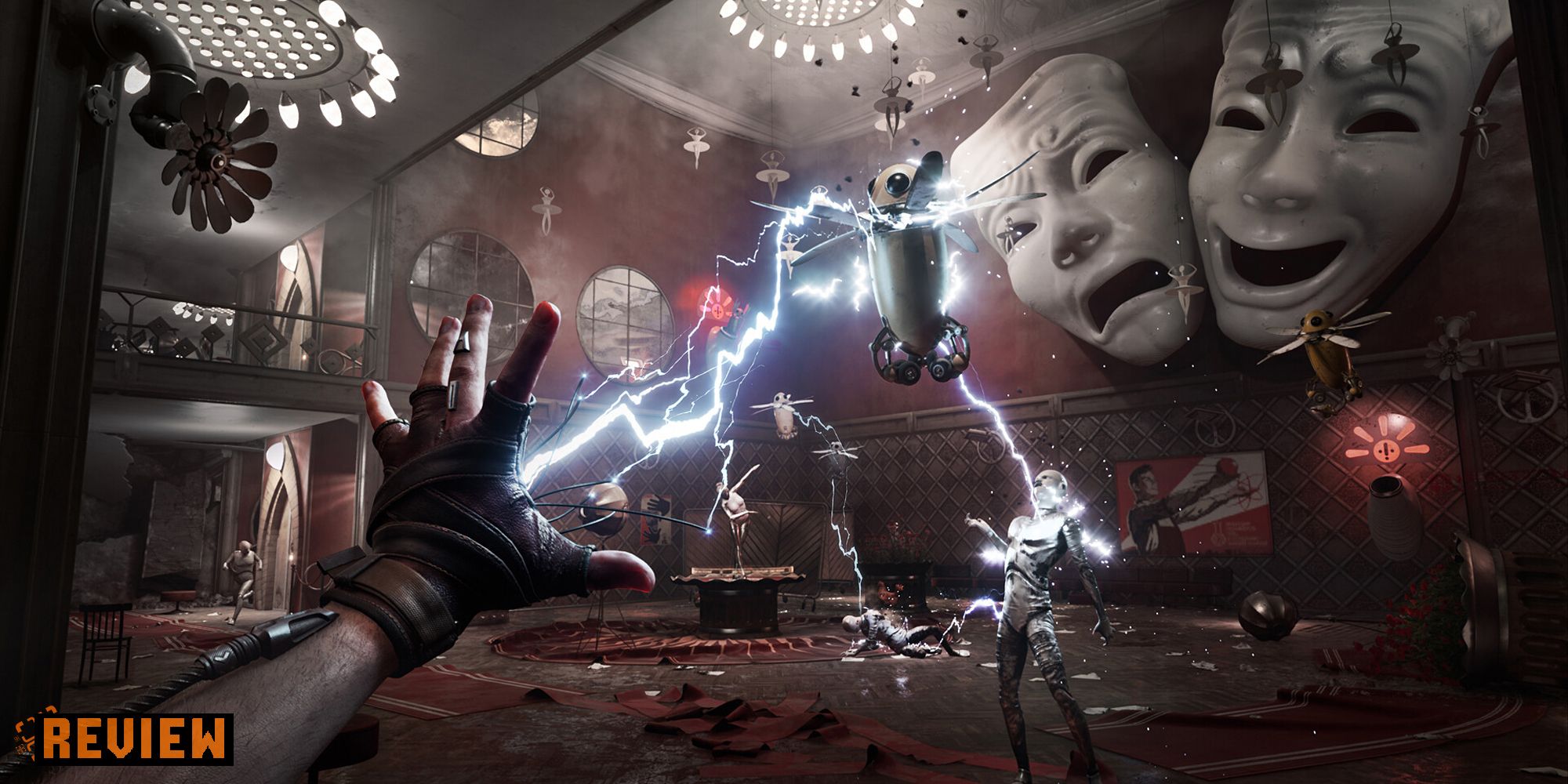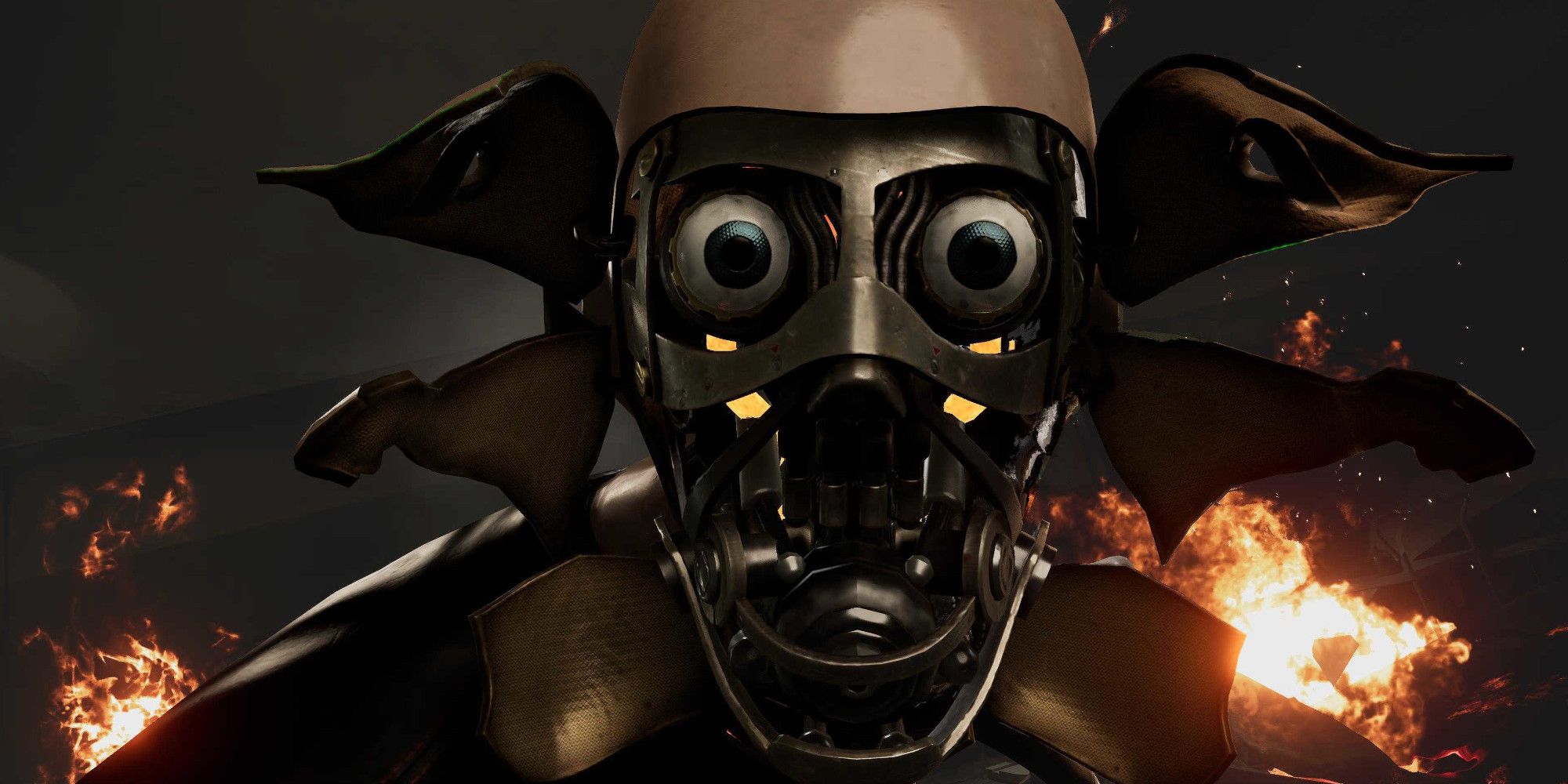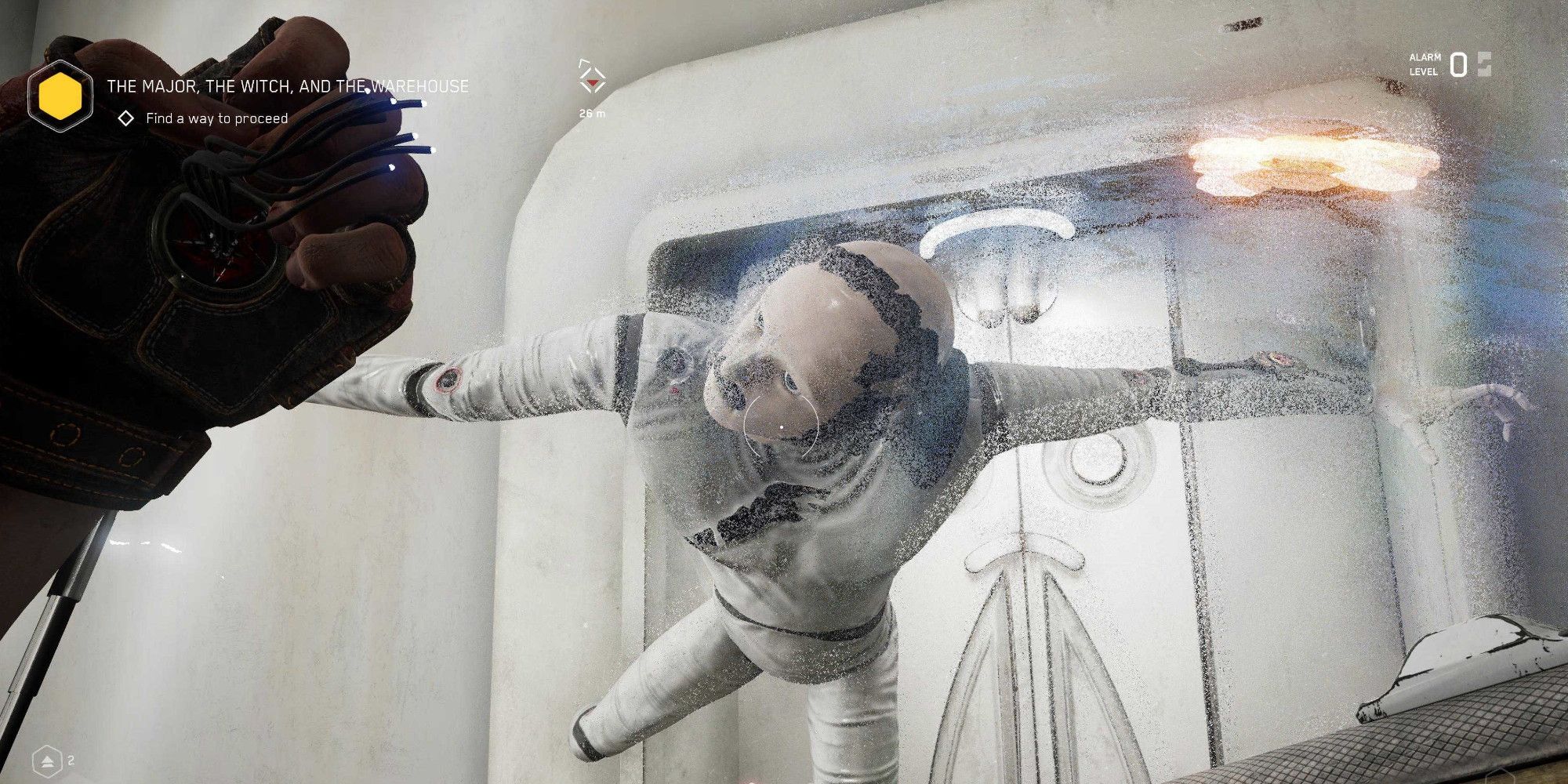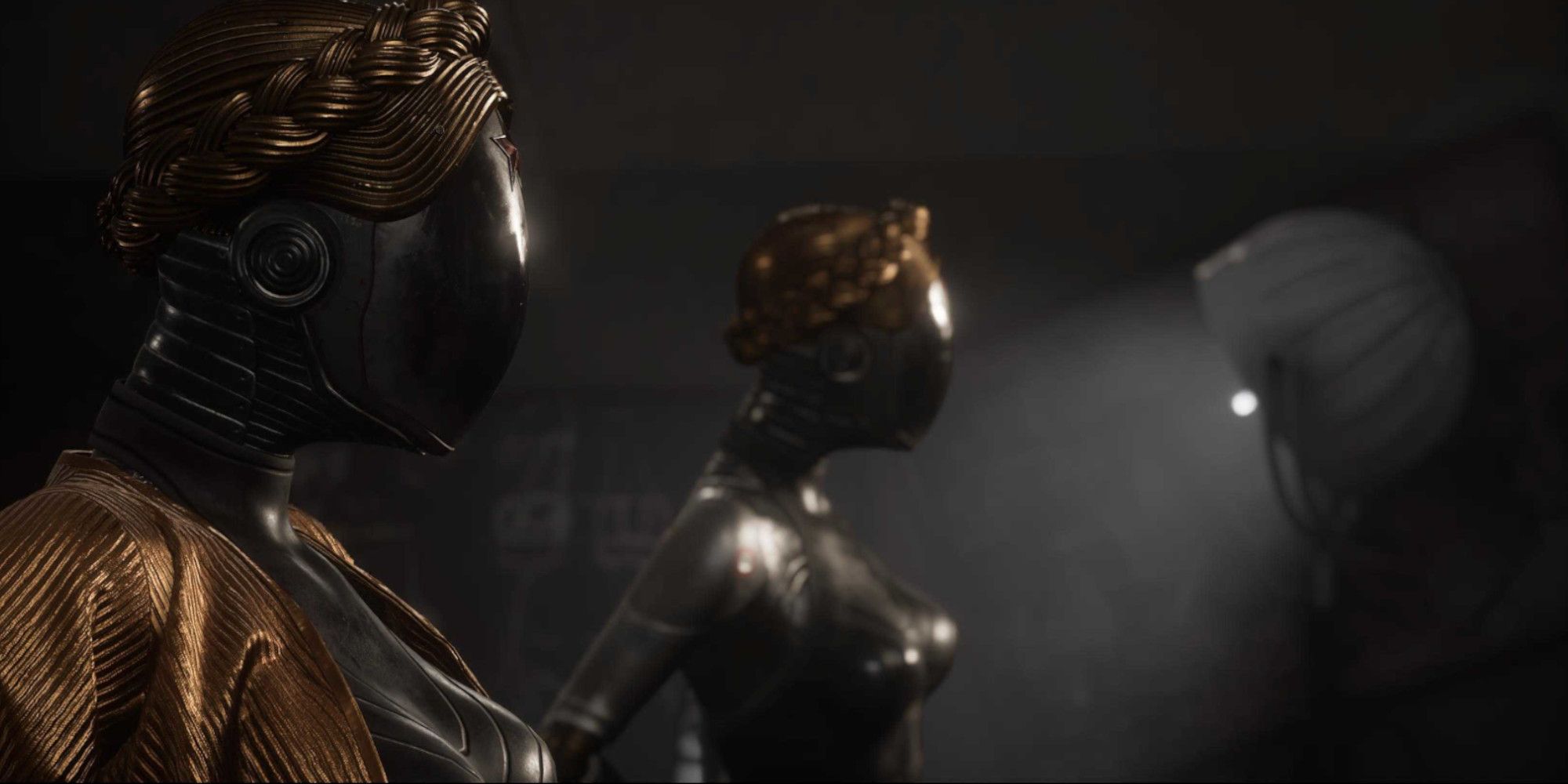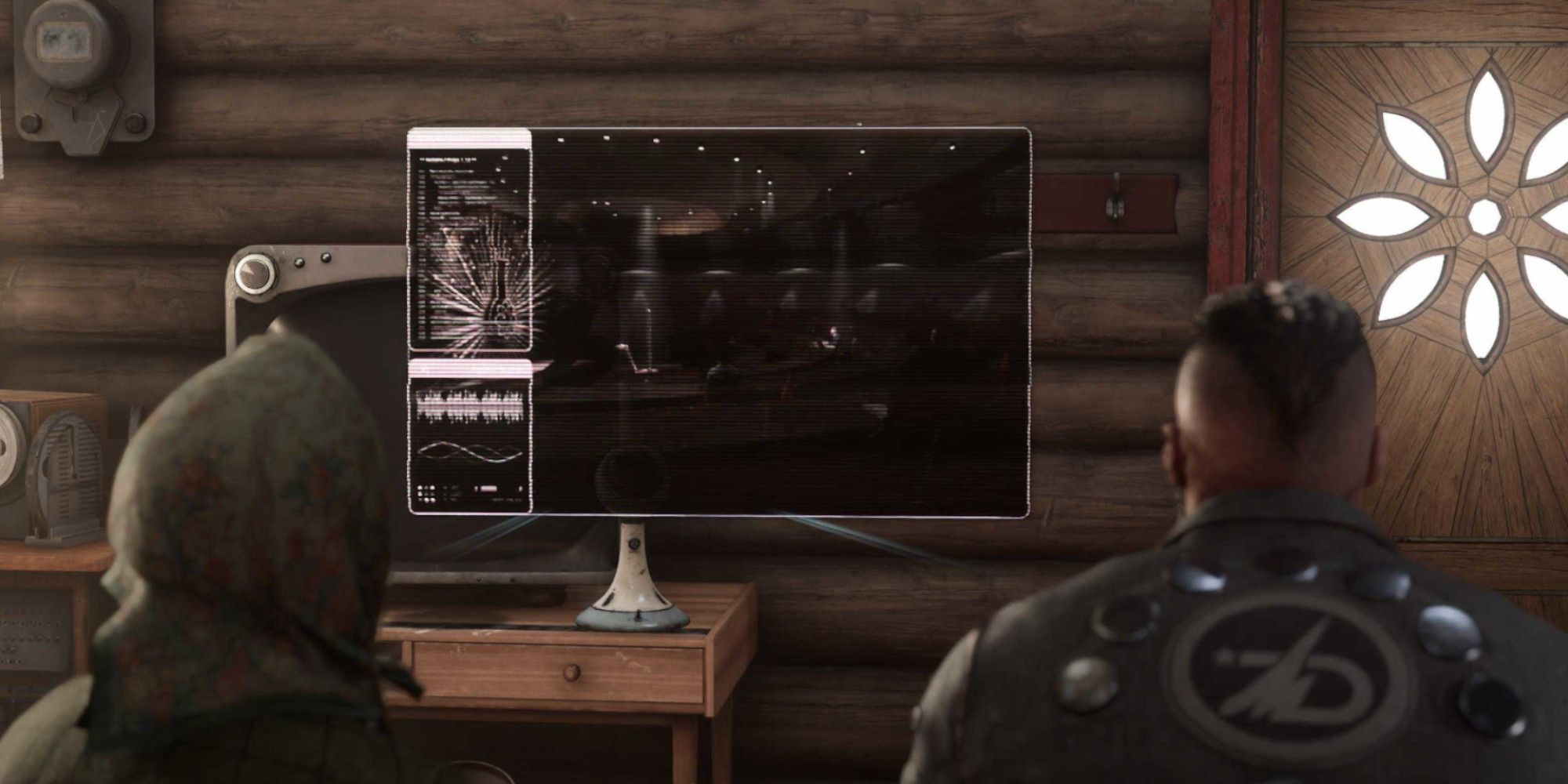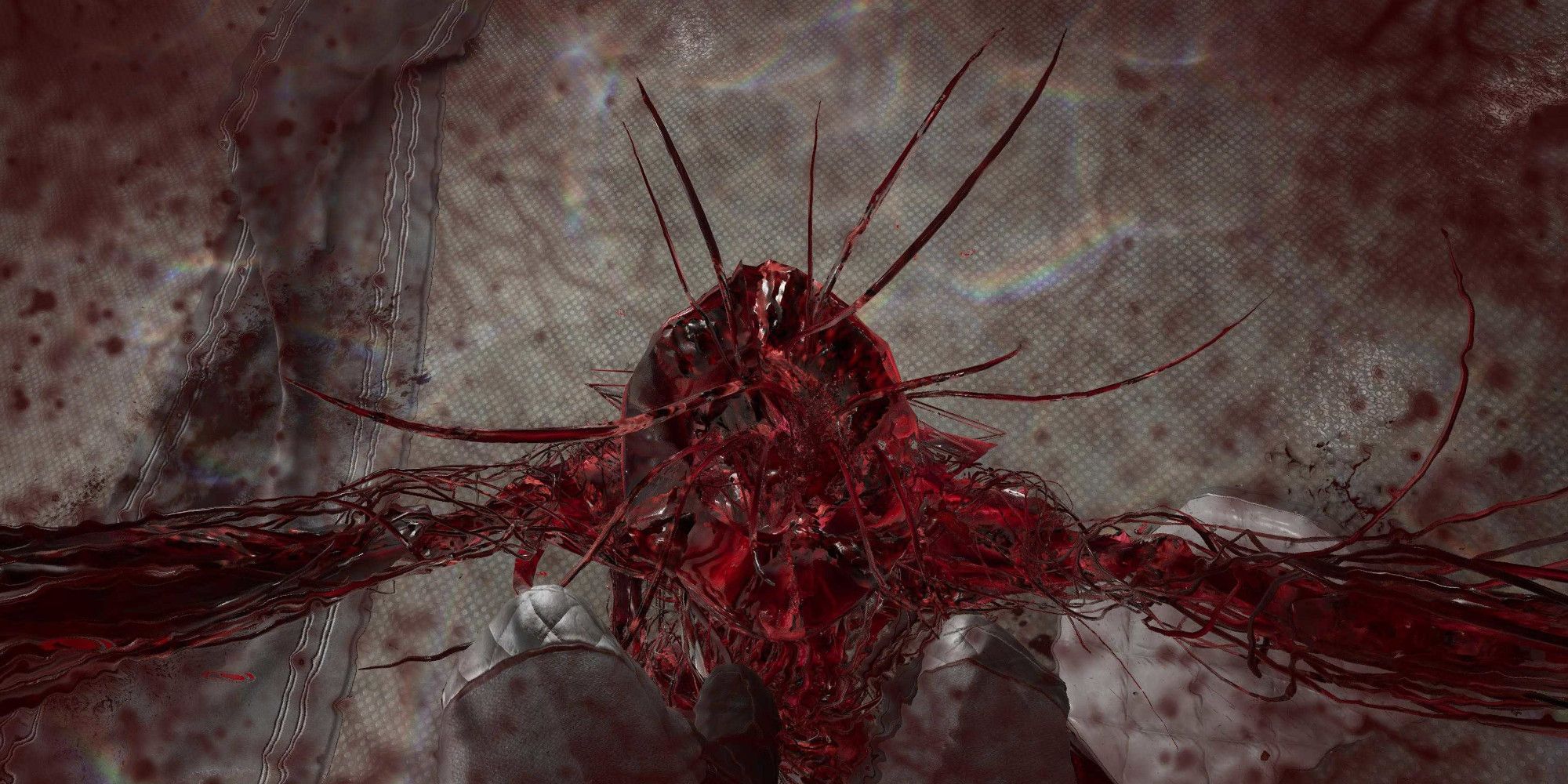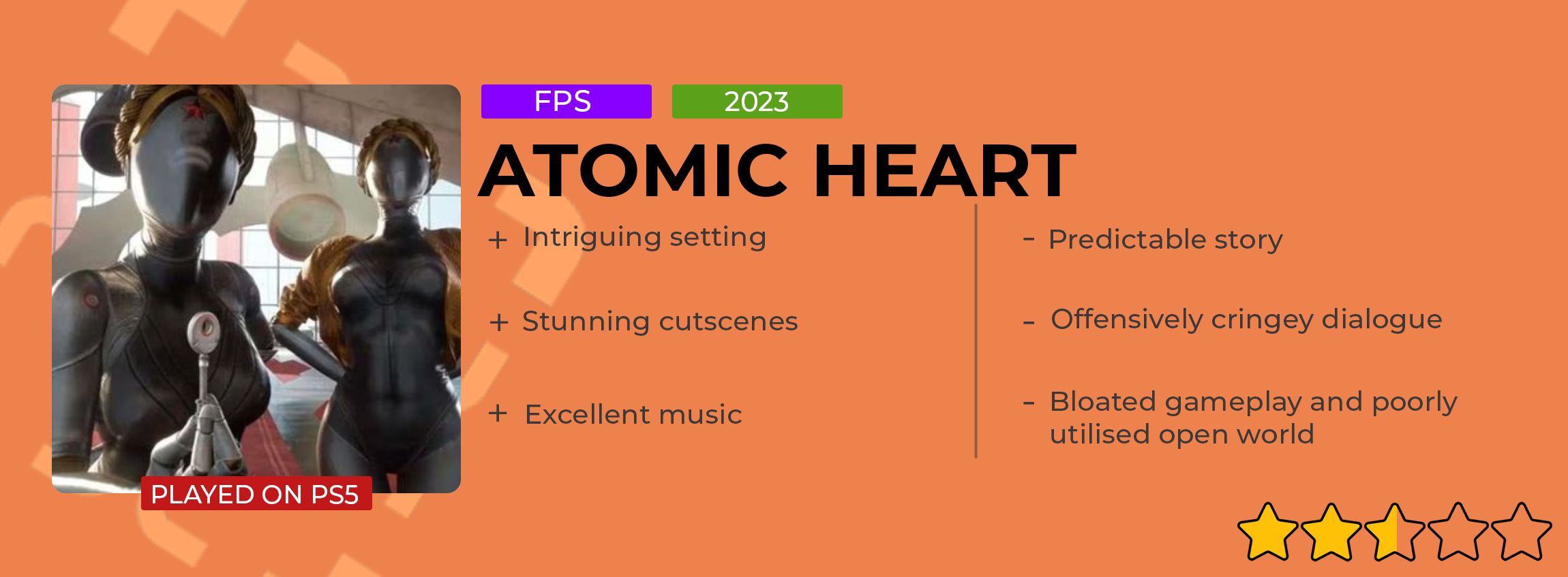In Atomic Heart, you play as P-3, a Russian covert agent who also happens to be the most unlikeable protagonist I’ve ever had the misfortune of spending over 20 hours with. He’s a caricature of the dutiful agent of the state - petulant, comically ignorant of the world around him, and voiced in a manner so annoying I eventually switched the audio to Russian. I couldn’t stick to it, however, as the subtitle font is so small I had to lean forward and squint to read it. Even in Russian you can tell P-3 is a dick, but in a way that conveys how annoying he is without making you annoyed listening to him.
You’re tasked with investigating an incident at Facility 3826, the scientific jewel of an alternate history USSR and the envy of the world. Thanks to Polymer - think ADAM from BioShock - it’s a tech utopia full of delightfully quirky oddities like the ability to swim through a gravity-defying liquid and speak to the recently deceased. The once peaceful and helpful robots who served the city have malfunctioned, causing them to attack civilians. It’s a plot beat that’s been done to death, but the setting at least sells it well. The sleepy villages above ground hide secret entrances to advanced laboratories below, and while the environments are all pretty, it’s underground where Atomic Heart’s Soviet ‘50s sci-fi aesthetic shines.
These subterranean labs are chock full of thoughtful designs. From atriums serviced by cleaning bots to breakrooms with digital beaches in the windows to offices filled with wall-to-wall filing cabinets, every room feels like it has a distinct purpose. Unfortunately, these gorgeous areas often outstay their welcome due to the fetch quests Atomic Heart uses to bloat the playtime, but they’re always a delight to marvel at. This is one of the most egregious examples of a fatal flaw in modern game design, where titles feel the need to justify their increasing cost by including dozens of hours of content, no matter how dull or repetitive that content is.
This issue is exacerbated by the need to trek across the utterly pointless and endlessly hostile open world in order to reach these meatier parts of Atomic Heart. Whoever decided it would be fun to implement infinitely respawning enemies should be sacked. The game also flits between extreme hand-holding and ‘figure it out yourself’ mentalities seemingly at random, which often left me stuck trying to figure out systems that hadn’t been adequately tutorialised, or else bored to death while the game led me around.
This makes exploration and discovery a chore, which is entirely unnecessary anyway. There are hidden underground puzzle rooms that function like miniature versions of the main facilities which house specific weapon upgrades. More of Atomic Heart’s charming aesthetic is welcome, but I was comfortably able to beat the shooter with early-game weapons that didn’t require unique upgrades.
You use melee weapons to generate energy for your ranged energy weapons, and you can also use more conventional arms like a Kalashnikov. It encourages you to try out different moves and gives combat a nice flow. The Plasmid-like powers afforded by your robot glove, Charles, aren’t nearly as varied as the trailers make them seem, though. The only two I found useful were the default electric shock and mass telekinesis, a satisfying move that lifts all enemies in an area into the air and sends them crashing back to the ground. Slapping them about like a piñata as they float and writhe is also obscenely entertaining.
Given the open world and padding in Atomic Heart, the early enemy designs soon become stale, but variations are added toward the midway point that liven things up. A blend of eerily uncanny robots and horrific mutations that look like a cross between Stranger Things’ demigorgon and The Last of Us’ clickers can be overwhelming in groups, but by the third act, once you’re all powered up, you can dispatch entire rooms with ease in a brilliant shower of guts and bolts. The fetch quests also mercifully peter out, meaning you can speed through the last few facilities to the story’s conclusion.
The plot is predictable - I guessed the big twist after barely an hour of play - and is told mostly through conversations between Charles and P-3. Forspoken caught a lot of heat for cringey dialogue, but Atomic Heart’s is the worst offender in a decade. It’s painful to listen to, making an already trite story a chore to endure. Charles grew on me over the course of the story though, a salve to P-3’s abrasiveness. He mostly functions to educate P-3 on the woes and hypocrisies of the communist party, and offers a blunt critique of the failures of the USSR present in the overarching story that helps to allay worries that Atomic Heart is simply Russian propaganda after reports emerged developer Mundfish was heavily funded by higher-ups in Putin’s regime. The developers may not comment on politics, but their game certainly does. However, if these reports are accurate, there’s a good chance buying Atomic Heart will help fund Russia and, by extension, its invasion of Ukraine.
Despite my issues with the writing, the cutscenes are some of the most visually impressive I’ve seen in years. They lean into the game’s almost alien setting with slow, deliberate shots and unique angles that take advantage of the stunning decor, with an eerie soundtrack befitting of the very best sci-fi horror. The rest of the music is also excellent, with modern songs and synths seamlessly blended into old ditties in a way that is both mechanically and diegetically satisfying. It helps to elevate the combat encounters and had me picking fights for no reason other than to listen to the soundtrack to my carnage.
Although the cutscenes are brilliant, some can’t help but highlight Atomic Heart’s juvenile attitude to sex. All the feminine robots are overly-sexualised, with the vendor used to upgrade P-3 and his weapons a desperate nymphomaniac and the deadly ballerina twins that feature on the box art used to titillate with egregiously male gaze-y shots. There’s also a vagina motif running through a lot of the decor, which works in the theatre-cum-brothel, but not in the facility at large. It’s never interrogated earnestly enough to even generously be called a critique.
The theatre mission and boss are a clear riff on BioShock’s beloved Sander Cohen level, and are a prime example of the way Atomic Heart proudly wears its inspirations on its sleeve without doing enough to elevate them beyond mere references. Annihilation’s iconic sound effect feels like it’s ripped straight from the movie in the more surreal sections of the game, and a heavy-handed Animal Farm quote ensures you know the game knows the USSR was bad.
Atomic Heart is the result of 15 years of thoughtful world-building and storytelling, but fails to live up to any of it. Individual parts work well, and would fair far better if the padding was stripped away, but those who enjoy combat for its own sake will be happy with the amount on offer. I’ve never encountered a world that was simultaneously so intriguing and so off-putting. Every system implemented to pad out the playtime is the antithesis of fun, yet I’m still drawn to the more bespoke parts of Facility 3826. Atomic Heart is three times too big and beats erratically, but its more confident components prevent it from flatlining.
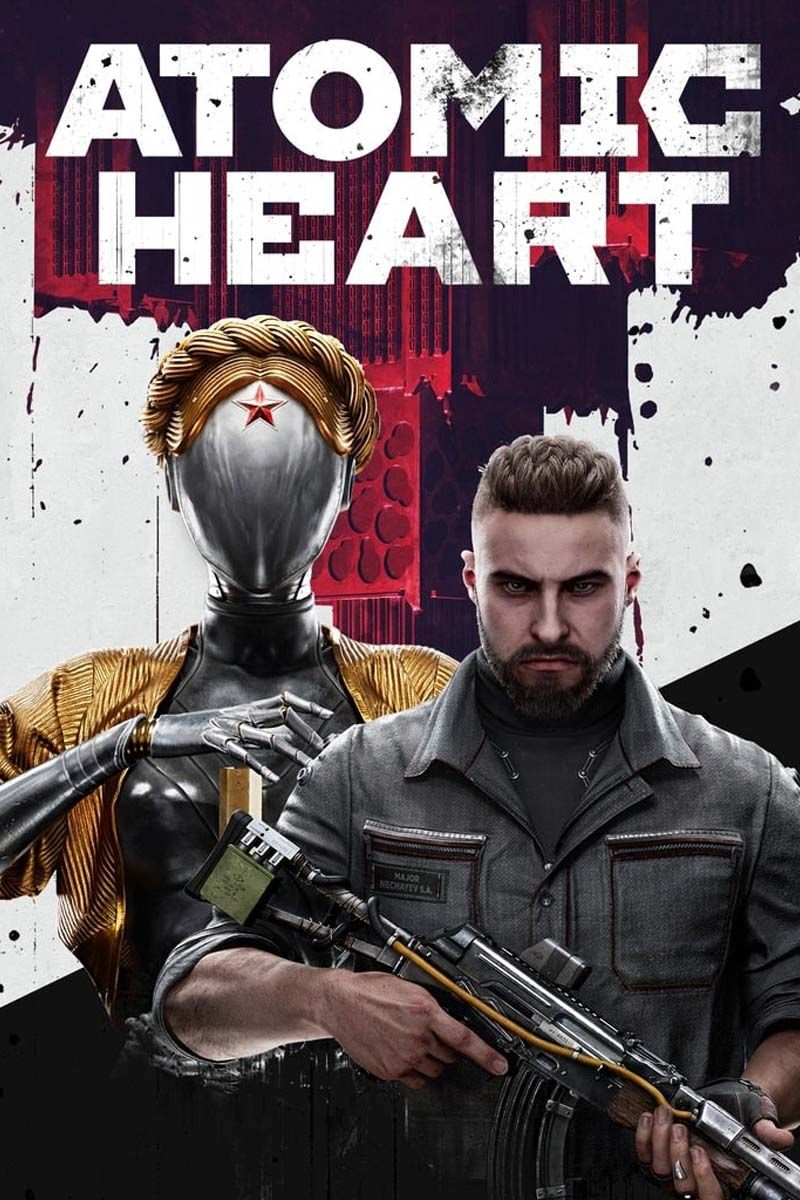
Atomic Heart
Atomic Heart is a 2023 first-person shooter from Mundfish. In it, you play an amnesiac war veteran and agent, tasked with preventing a global catastrophe.

